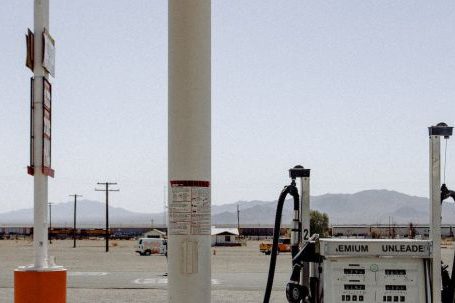In the high-stakes world of petroleum exploration, where every decision can have significant financial implications, having access to timely and accurate information is crucial. This is where early warning systems come into play. By providing real-time data and alerts, these systems enable oil and gas companies to make informed decisions, mitigate risks, and optimize their exploration efforts. In this article, we will explore the importance of early warning systems in petroleum exploration and discuss how they are revolutionizing the industry.
Detecting Anomalies and Identifying Risks
The first step in any early warning system is the ability to detect anomalies and identify potential risks. In petroleum exploration, this can range from monitoring drilling operations to analyzing seismic data. By constantly monitoring these parameters, early warning systems can quickly alert operators to any deviations from the expected norms. For example, if drilling pressure suddenly increases beyond acceptable limits, an alert can be sent to the operator, allowing them to take immediate action and prevent potential equipment failure or accidents.
Real-time Data and Analysis
One of the key advantages of early warning systems is their ability to provide real-time data and analysis. In the past, exploration teams had to rely on intermittent reports and manual data analysis, which often resulted in delayed decision-making. With early warning systems, data is continuously collected, processed, and analyzed, providing operators with up-to-date information at their fingertips. This not only enables faster decision-making but also allows for proactive measures to be taken in response to changing conditions.
Optimizing Exploration Efforts
Early warning systems also play a crucial role in optimizing exploration efforts. By continuously monitoring key parameters, operators can identify trends and patterns that can help guide their decision-making. For example, by analyzing seismic data in real-time, exploration teams can identify promising areas for further investigation, potentially saving time and resources. Additionally, early warning systems can help optimize drilling operations by providing insights into the behavior of the reservoir, allowing operators to make informed decisions on well placement and drilling techniques.
Mitigating Environmental Impact
In today’s environmentally conscious world, minimizing the impact of petroleum exploration is a top priority. Early warning systems can assist in this endeavor by providing operators with real-time information on any potential environmental risks. For example, by monitoring water quality in the vicinity of drilling operations, early warning systems can detect any changes that may indicate pollution. This allows operators to take immediate action to mitigate the impact and prevent any lasting damage to the environment.
Continuous Improvement and Adaptation
Early warning systems are not static; they are constantly evolving to meet the changing needs of the industry. By analyzing historical data and feedback from operators, these systems can continuously improve their algorithms and prediction models. This iterative process ensures that the early warning systems become more accurate and reliable over time. Additionally, with advancements in technology, such as the Internet of Things and artificial intelligence, early warning systems are becoming even more capable of detecting and responding to potential risks.
Conclusion: Empowering Decision-Making
In the fast-paced and high-risk world of petroleum exploration, early warning systems are becoming an indispensable tool. By providing real-time data, analysis, and alerts, these systems empower operators to make informed decisions, mitigate risks, optimize exploration efforts, and minimize environmental impact. As the technology continues to advance, early warning systems will play an increasingly crucial role in the future of petroleum exploration, ensuring that companies stay ahead of the curve and maximize their chances of success.





